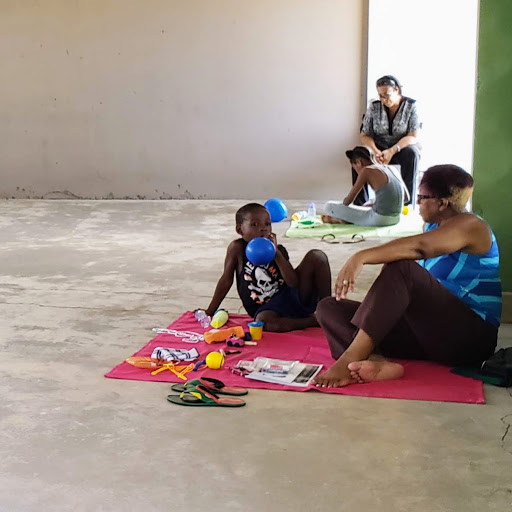One child, one set of toys laid out on a mat, one trained adult giving undivided attention while the child decides how to play, a bit of quiet space, and 30 minutes of time … these are all the resources needed to run a Restorative Play Time. Through the group of trainees at the CPRT (Child Parent Relationship Training) classes we ran recently; over 50 play times were conducted for children who really needed that intervention.
At the start of the sessions, some heavy and disturbing themes emerged; one boy used the tape to bind his mouth, eyes, hands and feet and then lie motionless on his back with the water pistol on his chest. The adult said, “You are lying still” and the boy moved the tape around his mouth to clarify; “I’m dead.” Another boy used the toy soldiers to play out a war, where everyone died. A girl used a ball to beat and animal aggressively and repeatedly, and another girl acted out adults yelling at and beating a toy baby. But as each of these were expressed through play, and recognised by the adult, the themes began to lighten up. The boy was no longer dead, instead he was cooking to make sure that all the children who come to kids club could have food to eat, the other boy re-played the war, but this time there was one unharmed soldier who used a car to collect all the wounded, and instead of dying they were then revived as he cared for them and fed them. The ball changed from being a weapon to being way to interact and laugh with the adult, and the adults stopped yelling at and hitting the children, and started to show kindness and patience instead. None of these changes were instigated by the adults, each were just the progression that happened as the children found the opportunity to get things out from inside and know that they were being seen by a caring adult as they did.
It is not surprising to see those themes considering all that these children see and hear, but it never ceases to amaze me how quickly the change happens through a series of Restorative Play Times.
During the week we also learned some recent statistics from professionals working with children in Jamaica, one of which is that 154 children were randomly selected from Kingston’s inner-city communities and screened to test for mental health challenges, and 56 of them showed all the indicators of PTSD.
Again this is, on one level, not surprising … but it is very sad to see the scale of the issues for children living in this context.
Six simple words from the sixteenth chapter of John’s gospel resonated for me in a new way at the end of the week; “your pain will turn into joy.” (at the end of v20) The context of the verse is that the disciples were about to experience deep grief, when all their hopes would be crushed by Jesus’ arrest, trial and execution … but he promised that this pain would turn to joy when they saw what God did even after all hope was lost. Each child on each play mat took a similar journey from pain to joy … simply through another person listening to them. I believe God used each moment as we offered them to Him.
In different ways, we all experience things that crush our hopes, but what a difference it makes to know that, if our hope is in Him rather than our expectations, God has a joy in store even after all hope is lost.


I wonder if it works on adults. The parents
It is remarkable how God has opened up Play Therapy for Trench Town, and how he is using it to bring life into children who had lost it.
A verse comes to mind from a Peter York song:
Let the Kingdom come,
Willing hearts to pay
the price of love,
In the pain of night
in the joy of day
Let the Kingdom come.